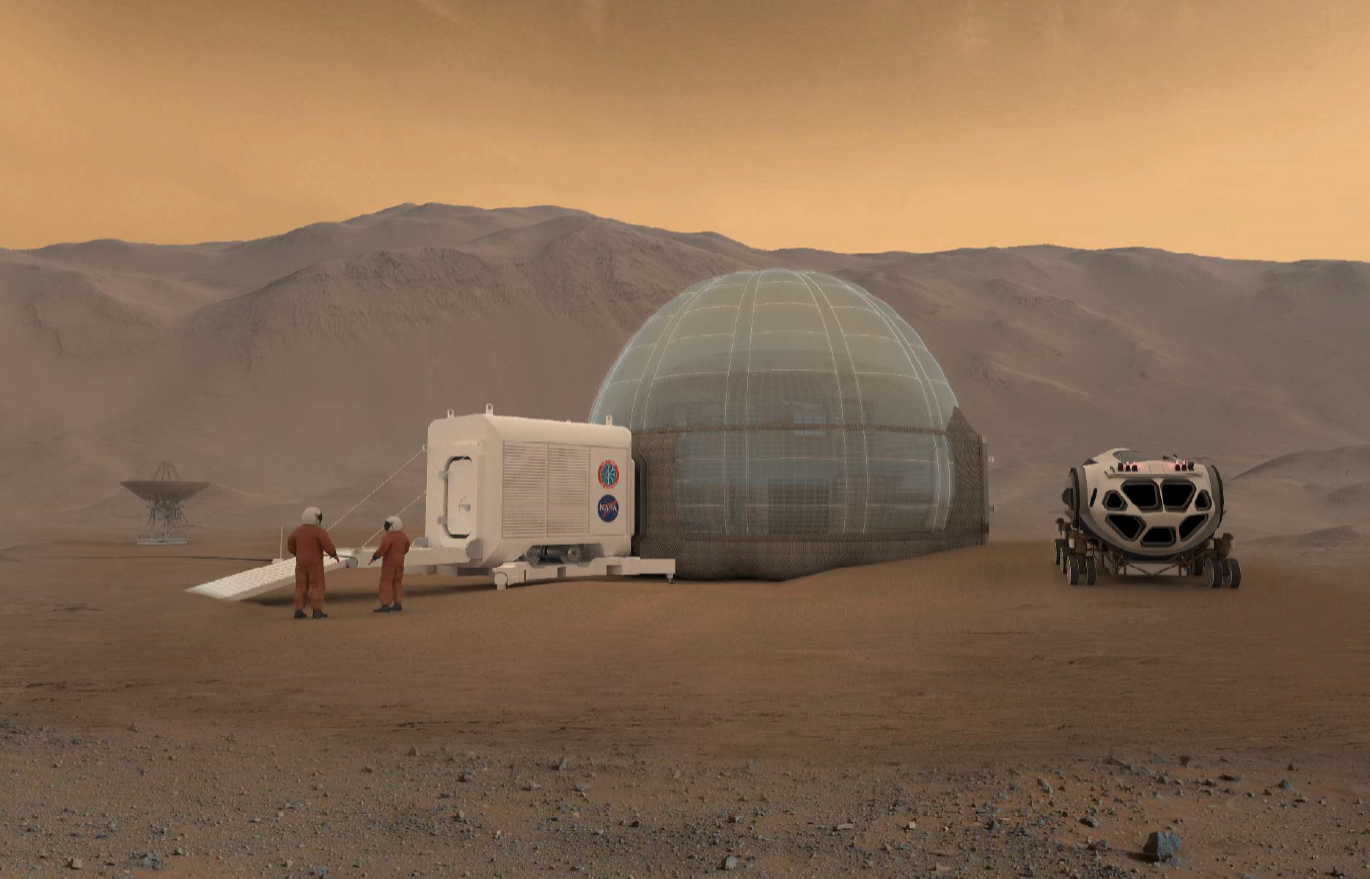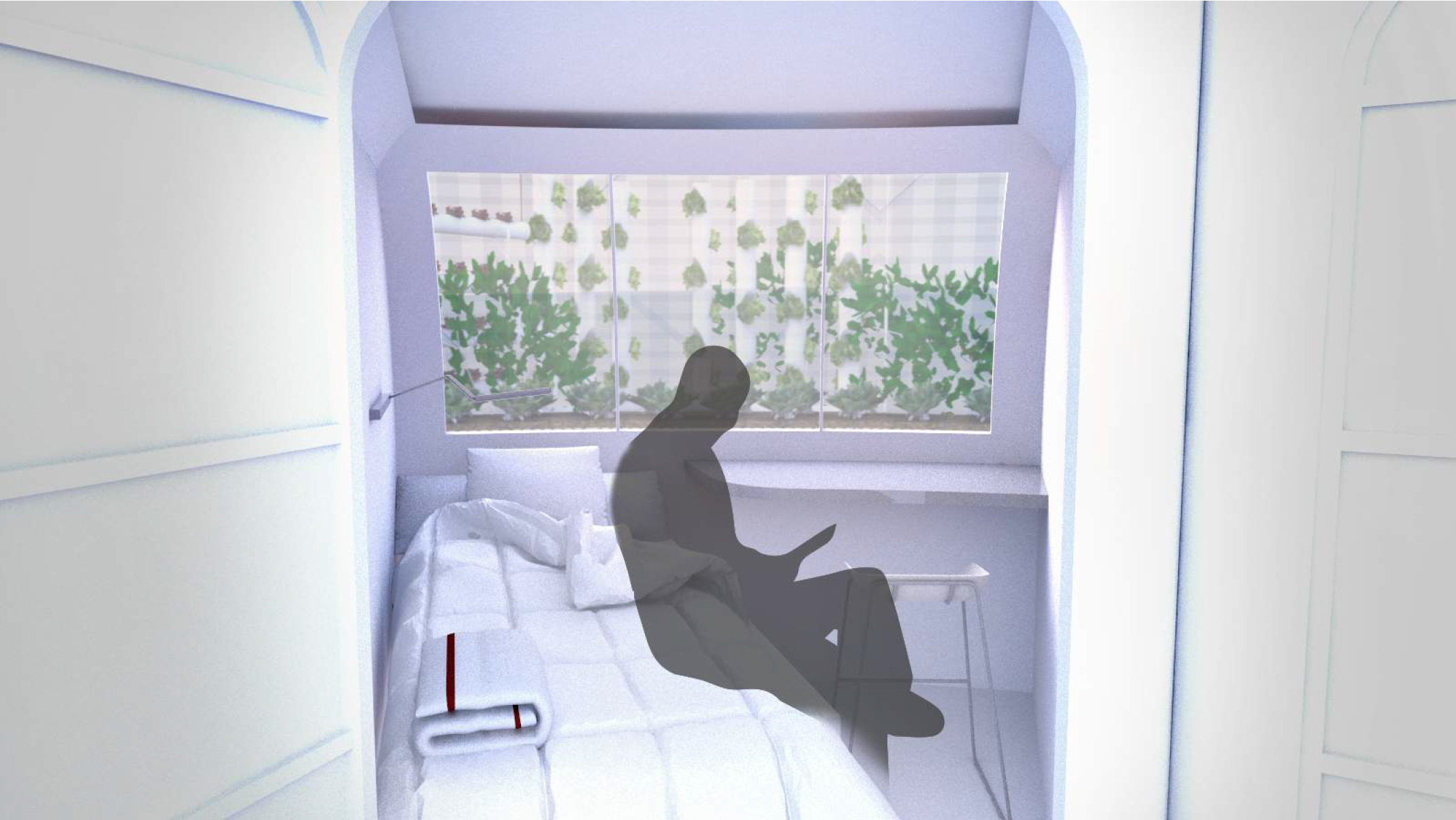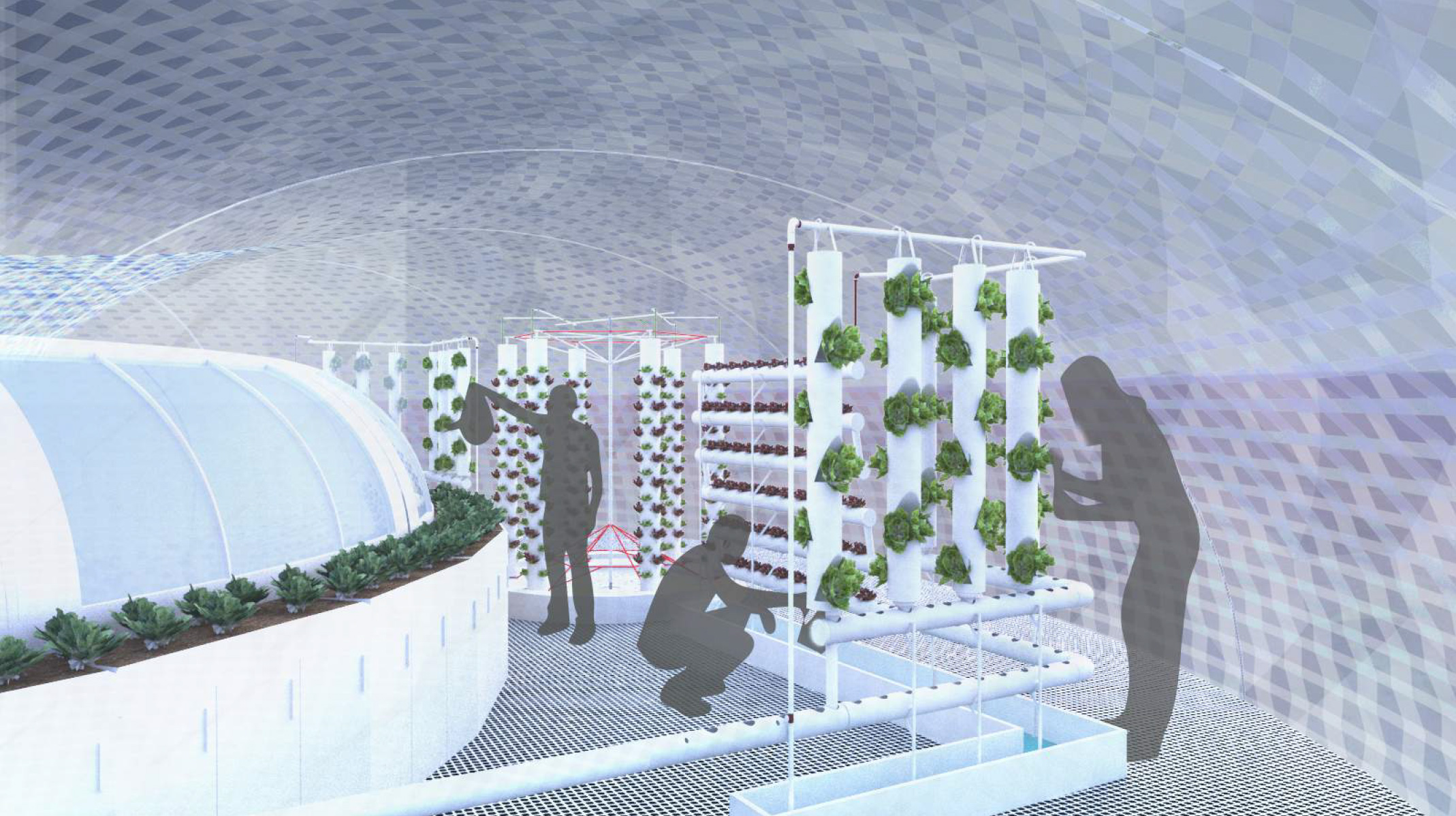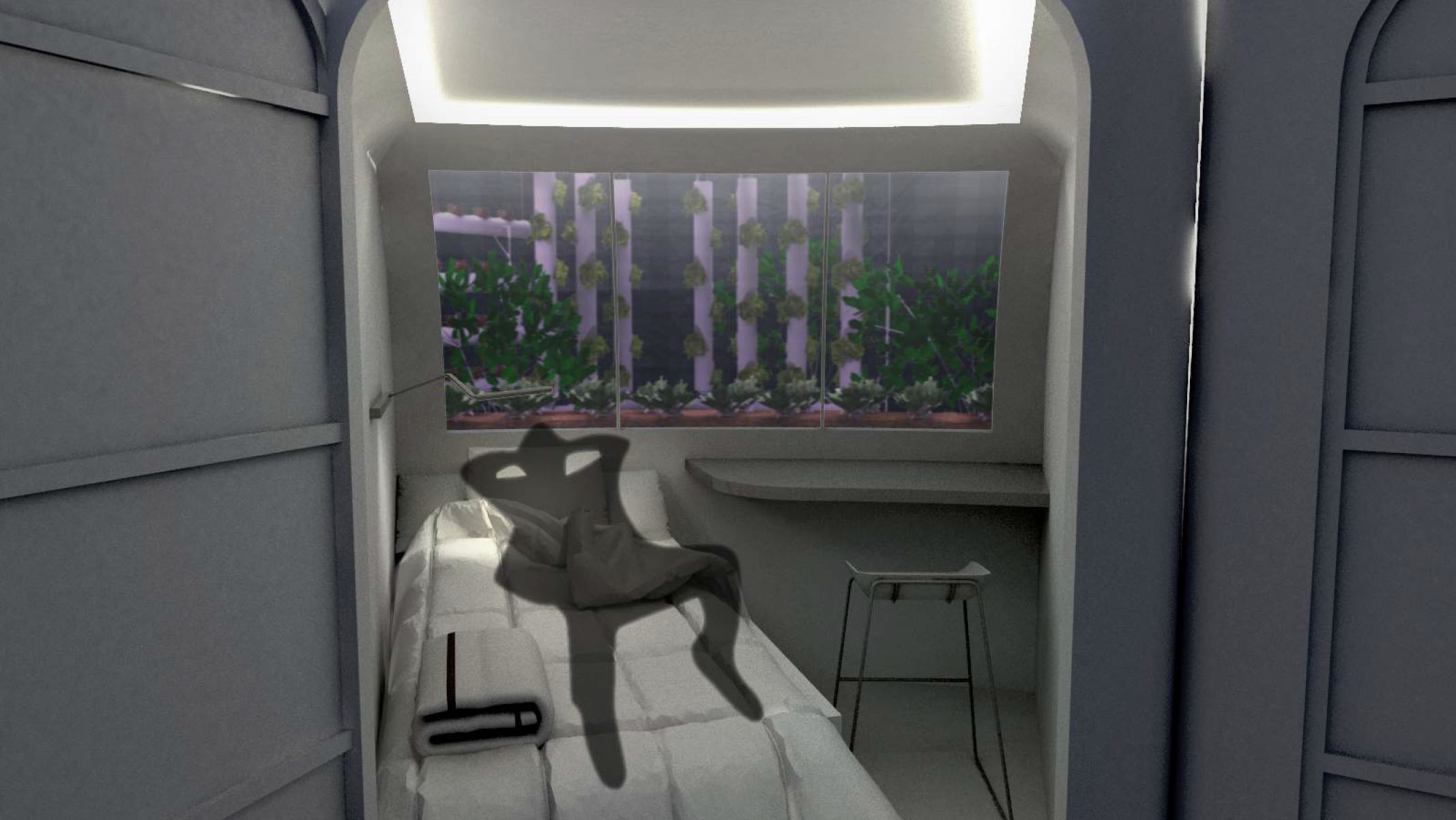NASA Langley Research Center:
Mars Ice Home Feasibility & Risk Reduction Study
In May 2016 the Space Exploration Architecture team and Clouds AO were invited to Langley Research Center to collaborate on a feasibility study for an ice-habitat concept similar to Mars Ice House.
At the end of the week-long session, we prepared a Concept of Operations package (ConOps) used to facilitate understanding of the concept from outside stakeholders, ensure it will meet NASA's mission needs, and which will ultimately be used to develop product requirements for an Ice Home System Requirements document. SEArch / Space Exploration Architecture is comprised of: myself, Christina Ciardullo, Kelsey Lents and Michael Morris. CloudsAO is comprised of: Jeffrey Montes, Ostap Rudakevych, Masayuki Sono, Yuko Sono
Concept
Galactic Cosmic Rays (GCRs) are a significant issue for human health on long duration Mars surface missions. Ice Home is a deployable Mars habitat concept based on an inflatable structure that incorporates In Situ Resource Utilization (ISRU) derived water-ice as GCR radiation shielding and as a structural component. Ice Home also provides a large, flexible, and cost effective workspace that can be used for many of the key activities that will be critical for the long term success of a human outpost on Mars. The Ice Home System includes the soft-goods Ice Home Inflatable Structure as well as Deployment and Access Subsystems.
Technical Goals
Provide a Mars habitat design concept that:
a) Improves Mission Effectiveness:
- Reduce GCR dose by >50% over habitats based on an aluminum structure (as depicted in the Humans to Mars Architecture: i.e. Aluminum shell with minimal shielding in the form of logistics storage above the crew)
- Improve Human Factors (Large pressurized work area, Diurnal lighting, other uses such as recreation, plant growth, etc.)
- Scalable design for supporting a wide variety of mission scenarios
b) Improves Mission Affordability (Reduces Life Cycle Cost over existing habitat designs)
- Reduced Launch Mass per cubic meter of pressurized working space
- Provides dual use functions (Replaces water storage systems, provides logistics storage, etc.)
- Can be pre-deployed with only basic robotic systems (as opposed to habitats that must be buried under meters of regolith (typical geology is bedrock) to achieve the same level of shielding).
- Minimize technology development risks (i.e. pre-deployed large scale excavation/regolith construction systems).
Section of the habitat
First floor plan and program areas
Second floor plan and program areas
A Day in the Life
A typical day for the Ice Home crew will begin when the crew wakes up to their view of the garden through windows in their crew quarters and leave their well shielded crew quarters at the center of the Ice Home and go to through the airlock to the Integrated Surface Habitat (SHAB) to fix a hot breakfast and have a morning team briefing. Since many of the daily tasks will occur inside the Ice Home they will soon return to begin work. Crew members will go to the greenhouse section to perform routine garden tasks. Another will enter the Ice Home to begin implementing another set of mission science sessions. This includes remotely operating robotic vehicles on the Martian surface and analyzing materials that have been returned. Another will don an environmental suit to begin performing routine maintenance on external systems brought into the repair and maintenance section the previous day.
Site Preparation
Ice Home must be packaged in a stowed configuration that can be accommodated (with any other systems being transported to the outpost) within the volume and dimension constraints of the EDL aero shell. After landing, the Ice Home deployment package will be transported from the Mars Landing Zone to the habitation zone via robotic transporters (as envisioned in official Mars architectures).
Imagined Deployment Configuration
Deployment
Once adequate water is stored within the Ice Home, sections will be filled and allowed to freeze in a sequential order. The sequence of fills will depend on the mission scenarios.
After an integrated habitation module is located near the Ice Home, a soft goods passage will be connected to the crew airlock port to provide a pressurized path to transfer equipment and supplies. Large items will be brought in by robotic vehicles via the cargo airlock. The Mars atmosphere will be replaced with a human compatible atmosphere prior to crew arrival.
Material Layers
An important design consideration for the Ice Home team was Human Factors over a long duration mission. A key design goal for the team was to allow some level of external light to pass through the structure to provide diurnal lighting. Significant effort went into the selection of materials that offered high strength with low creep as well as high resistance to the Martian environment that also have high light transmission.
Environmental considerations included:
- External abrasion by windblown dust
- External degradation by radiation
- External degradation by perchlorates
- External degradation by atomic oxygen
- Internal abrasion by crew activities
- Internal abrasion by water ice movement
- Internal outgassing into the crew area (in accordance to ASTM E595)
- Flexibility, creasing, and degradation at extremely low temperatures
It is expected that the large dimensions of the bladder layer for the habitation area along with the low permeability required will be a significant manufacturing challenge. Interior abrasion layers have been designed to be removable to allow access to the internal bladder layer in the event repair is needed.
For the restraint layer, material experts selected high grade fiberglass webbing over other materials for its low creep properties, wide temperature range, high resistance to chemical and UV degradation and its good light transmission properties.
Mylar, another proven material for use in space was chosen for similar reasons for the ice, water, and gas insulation layers. Follow on work is needed to test materials such as Mylar in contact with water ice during freeze/thaw cycles to ensure the ice does not tear the material during this transition. Coatings may be needed to reduce surface adhesion.





